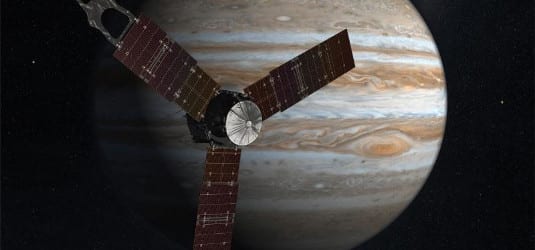
Another exceptional feat of mankind was reached on Monday, as NASA’s Juno spacecraft was thrust into the orbit of Jupiter, 870 million kilometers from earth. It was achieved with the support of solar technology, which is being used to power the pioneering craft on its mission.
The Juno spacecraft was built by Lockheed Martin Space Systems in Denver, who installed 18,698 individual solar cells on the craft to give it power on its journey. The Lockheed team is also jointly controlling the spacecraft’s flight operations, with NASA, from its Mission Support Area.
The Juno mission, which launched on 5 August 2011 from Cape Canaveral Air Force Station in Florida, is part of NASA’s New Frontiers Program. It has the ambitious aim of not only visiting Jupiter, but also to try and understand the origin and evolution of the planet, by investigating its core, magnetic field and atmosphere.
On the symbolic date of 4 July, the Juno spacecraft successfully entered Jupiter’s orbit, which is described by Lockheed Martin Space Systems as a “large, elliptical polar orbit” some 870 million kilometers from earth.
“Tonight, 540 million miles away, Juno performed a precisely choreographed dance at blazing speeds with the largest, most intense planet in our solar system,” said Guy Beutelschies, director of Interplanetary Missions at Lockhead Martin Space Systems. “Since launch, Juno has operated exceptionally well, and the flawless orbit insertion is a testament to everyone working on Juno and their focus on getting this amazing spacecraft to its destination.”
The “choreographed dance at blazing speeds” refers in part to the spacecraft turning so that its solar cells were facing the sun. The commands for the maneuver were sent to Juno four days before it was completed.
“The spacecraft worked perfectly, which is always nice when you’re driving a vehicle with 1.7 billion miles on the odometer,” said Rick Nybakken, Juno project manager from JPL. “Jupiter orbit insertion was a big step and the most challenging remaining in our mission plan, but there are others that have to occur before we can give the science team the mission they are looking for.”
Source: PV Magazine. Reproduced with permission.








